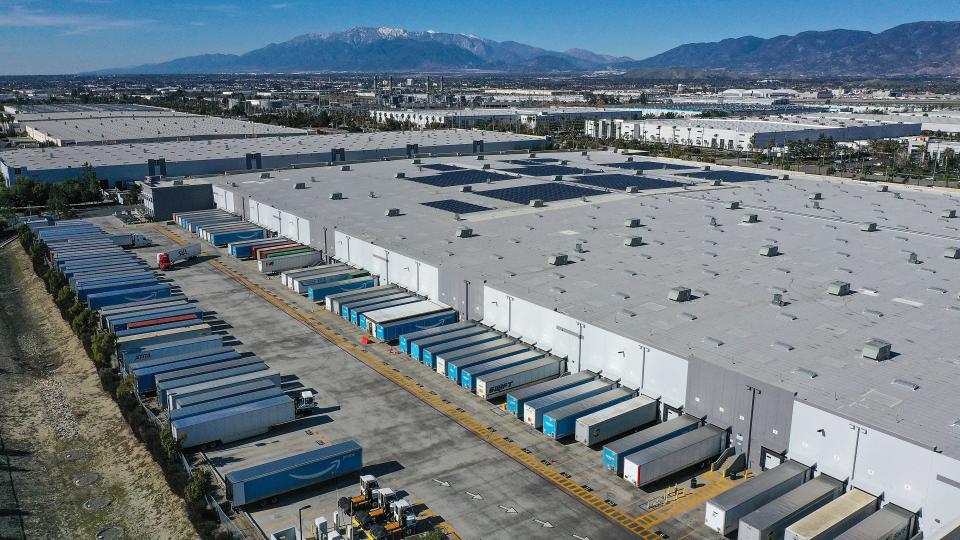Inland Empire politicians ignoring housing crisis while conjuring warehouse crisis
The telltale signs of income inequality, skyrocketing housing costs and chronic homelessness point to a grim reality. California is in a severe, escalating affordable housing crisis.

Again and again, leaders in Sacramento have identified the lack of available, suitable land as one of the main obstacles to affordable housing development. State and local agencies have expended millions in planning efforts to identify such available lands and prioritize them for housing.
But in the Inland Empire, decisionmakers seem unfazed by this reality and are enacting policies as if there were a warehouse crisis instead.
An astonishing 1 billion square feet of warehouse space has been built in San Bernardino and Riverside counties, with an additional 170 million square feet already approved or pending approval. Warehouses are increasing at a rate five times faster than population growth.
What’s most alarming is that cities and counties are approving massive logistics centers on land zoned for homes. At a time when we should be investing in affordable housing near transit and jobs, our decisionmakers vote to demolish neighborhoods, displacing residents and rolling out the welcome mat for industrial developers.
These untenable land-use decisions permanently eliminate prime real estate from home construction and bring in pollution that poisons the air for those who remain.
Near the San Bernardino International Airport, the Inland Empire Utility Agency recently proposed a 9.3 million square feet logistics center on top of a residential neighborhood. If the project is approved, not only will nearly 2,500 residents be displaced but the opportunity to build an additional 2,200 homes on this site, as it was zoned, will be forever lost.
Once officials make one decision to rezone from residential to industrial use in a neighborhood, it becomes easier to justify approving more of this “downzoning.” In Beaumont, a large residential parcel was deemed no longer suitable for homes because the city had recently approved industrial development on adjacent residential land. Each warehouse approval becomes a self-fulfilling prophecy leading to uncontrollable warehouse sprawl.
Warehouses beget more warehouses.
Meanwhile, the Inland Empire is falling far behind its state housing mandates.
The city of Perris has approved 900 acres of warehouse space in the past decade. It now faces a housing shortfall of sites for more than 4,000 affordable units for lower income and moderate income households. It’s worse in Rialto, where the city needs nearly 7,900 more housing units but has instead built more than 1,000 acres of warehouse space.
Lopsided growth favoring industrial development over affordable housing is unsustainable and creates a public health crisis that’s entirely preventable. Warehouses in the Inland Empire bring hundreds of thousands of diesel truck trips into neighborhoods every day, polluting the air in backyards, parks and schools.
As a result, the Inland Empire has the nation’s highest concentrations of ozone, the main ingredient in smog. In some neighborhoods, asthma rates are as high as 20%.
This is a dangerously high cost for workers and residents to pay, especially in exchange for temporary jobs that will soon be lost to automation. It’s abundantly clear that the Inland Empire needs a warehouse timeout.
Declaring a moratorium will allow the region to assess and limit this massive influx of warehouses. Before approving another one, we need to consider ways to require industrial development be good neighbors. Instead of an open-door policy that allows developers to profit, we should demand electric trucks, rooftop solar, building setbacks and other measures to reduce the environmental harms of this industry.
The Inland Empire, with great diversity in its population and landscapes, should not be known as a toxic warehouse wasteland. But unless decisionmakers make an abrupt U-turn that unfortunate reputation will be cemented.
Hallie Kutak is a staff attorney at the Center for Biological Diversity. Nisha Vyas is a senior attorney at Western Center on Law & Poverty.


This article originally appeared on Palm Springs Desert Sun: Inland Empire ignores housing crisis while conjuring warehouse crisis

